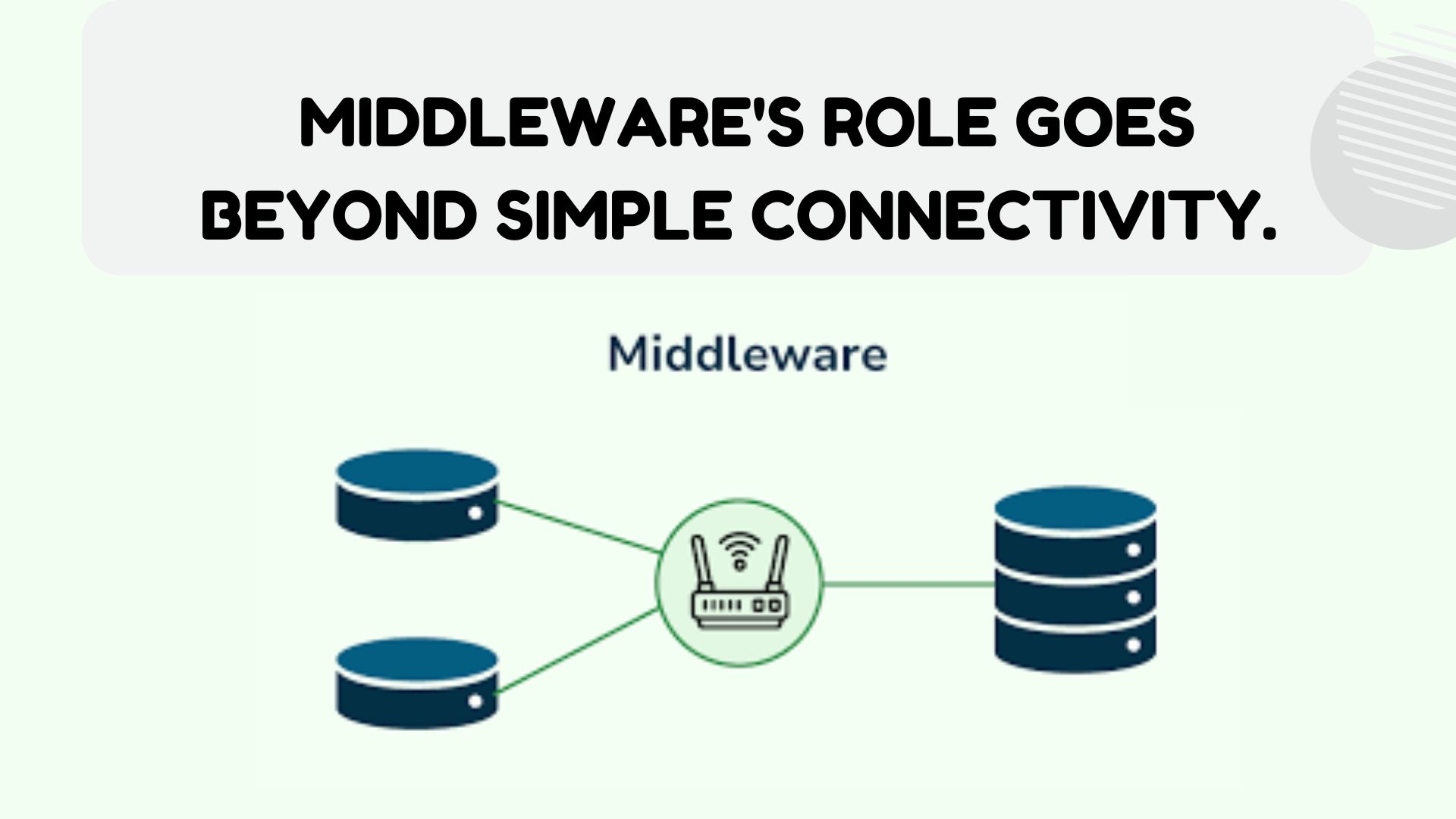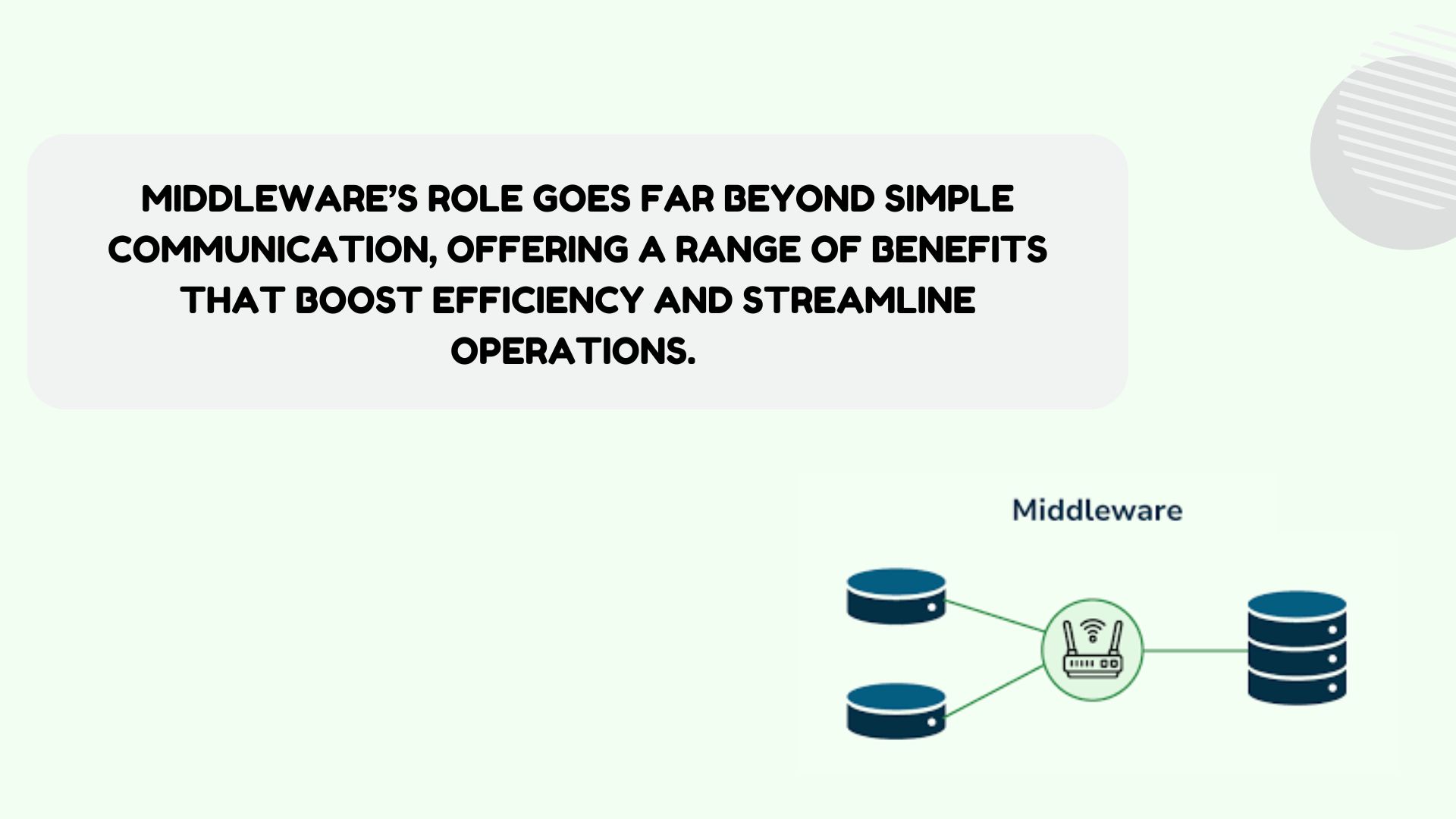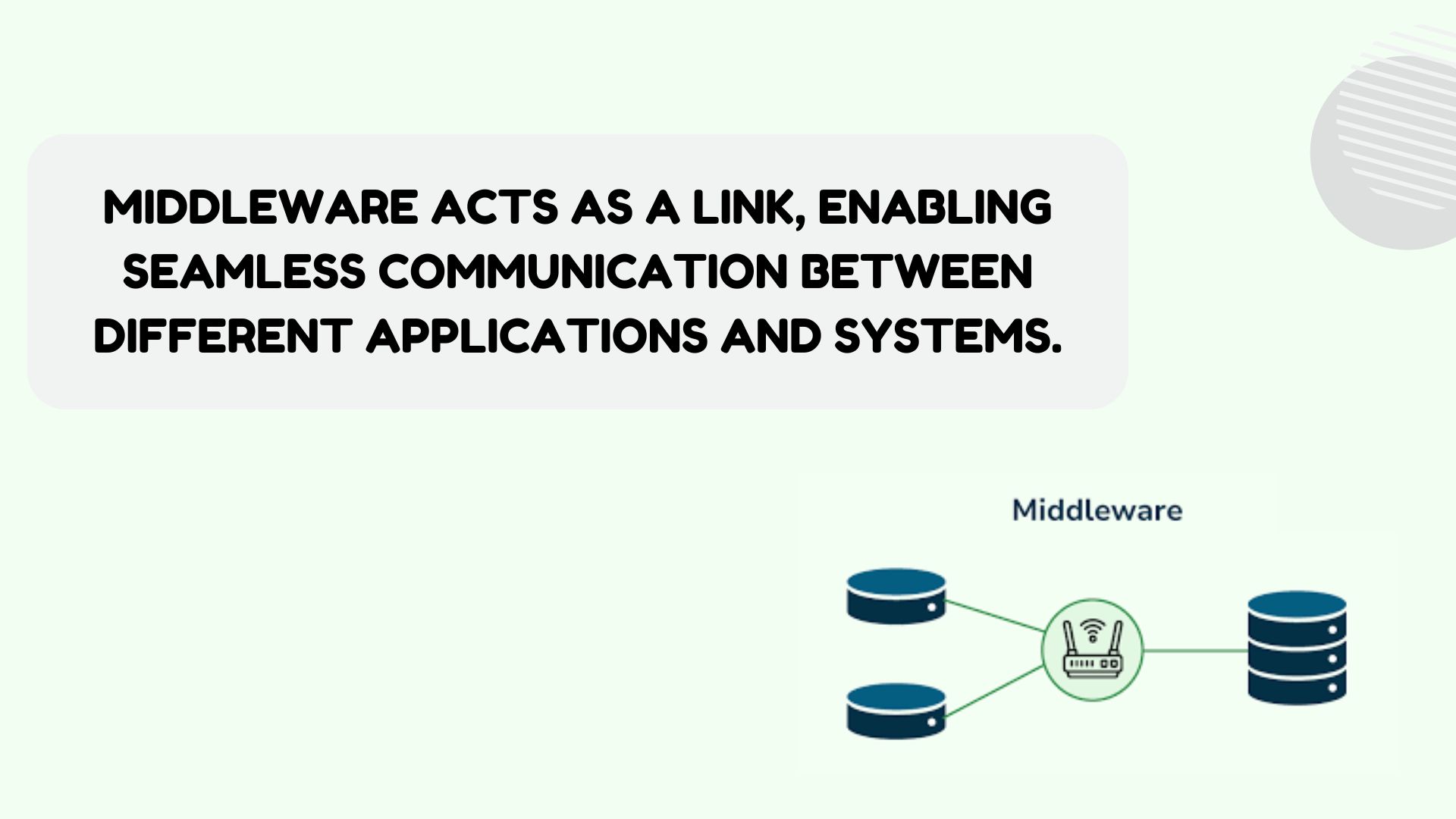
Modern Middleware is The Backbone of Digital-First Enterprises
Have you ever wondered how different software applications and systems communicate with each other?
How do they exchange data and coordinate tasks efficiently, even when they’re built using different programming languages or run on different operating systems?
The answer lies with middleware, the unsung hero of software architecture.
What is Middleware?
At its core, middleware is a layer of software that acts as a bridge between an operating system and the applications that run on it. Its primary function is to enable smooth communication and data exchange between various applications, systems, and technologies that might otherwise be incompatible.

It handles the complex processes involved in managing application services and APIs (Application Programming Interfaces). By doing this, it allows for the seamless flow of data and the effective execution of higher-level processes.
Think of middleware as a skilled interpreter in a large international conference. Instead of each person needing to learn every other language, the interpreter (middleware) translates between them, allowing everyone to communicate effectively and work together toward a common goal.
The Unseen Power of Middleware
To understand middleware’s impact, consider the process of making an online purchase. As you add items to your cart, a series of complex, interconnected tasks are happening behind the scenes. Your login is verified, product information is retrieved, your payment is processed, and order details are sent to a warehouse. Middleware is the unseen force that coordinates all these different systems and applications, ensuring a smooth and seamless experience for you.
Middleware may not be a topic that grabs headlines, but its impact is undeniable. It’s an unsung hero that enables the communication, data exchange, and smooth operation of different software systems. Without it, the seamless digital experiences we take for granted wouldn’t be possible.
Advantages and Benefits of Middleware
Middleware is a type of software that bridges different applications, systems, and technologies.

1. Streamlined Processing and Performance
Middleware acts as an important layer that handles complex, high-level processes. It manages the detailed workings of application services and APIs, freeing up applications and operating systems to focus on their primary functions. This division of labor leads to smoother workflows and enhanced overall system performance.
2. Reduced Development Costs
Middleware significantly reduces the time and resources needed for application development by consolidating common functionalities. Developers don’t have to start from scratch with every new application. Instead, they can reuse the built-in functionalities of the middleware. This speeds up the development process and cuts down on costs.
3. Cross-Platform Compatibility
Middleware acts as a universal translator, enabling applications to run consistently across different operating systems and hardware. This is especially vital in the interconnected world today where diverse systems must communicate effectively. No matter the underlying environment, middleware ensures seamless and smooth application communication.
4. Enabling DevOps
In a DevOps environment, middleware is essential for managing the application lifecycle. It facilitates continuous integration and deployment by ensuring that all parts of an application interact seamlessly.
5. Robust Execution Environment
Middleware provides a stable environment for deploying and running custom code. It guarantees that the code will run smoothly, without glitches, regardless of the underlying hardware or operating system. This stability is important for delivering a consistent and high-quality user experience.
6. Seamless Connectivity and Integration
Middleware connects custom applications, commercial software, and cloud-based services (SaaS assets) into a unified system. This integration is achieved through messaging, APIs, and other methods, ensuring smooth interaction between different system components.
7. Process Automation and Intelligence
Middleware adds a layer of intelligence to the application development process, automating repetitive tasks. This frees developers to focus on more strategic and creative aspects of their work, optimizing operations and improving decision-making.
The Role of Middleware in Modern Systems
Amidst the complex world of distributed computing, middleware has become an essential component. This software layer acts as a bridge between an operating system and the applications running on it, facilitating seamless communication and data exchange. This important function allows for the more efficient execution of higher-level processes. There are several different types of middleware, each serving a distinct purpose.
a. Web Server Middleware
Web server middleware is the unsung hero of a web application’s presentation layer. It manages tasks like handling HTTP requests and responses, directing traffic, and serving static files. Its primary purpose is to ensure a smooth connection between the client (the user’s browser) and the server. This type of middleware is similar to a skilled traffic controller, expertly directing the flow of data to ensure an optimal user experience.
b. Application Server Middleware
Moving deeper into the system, we find application server middleware. This component is responsible for the application’s logic layer, where the core business operations are performed. Its fundamental tasks include authentication, authorization, and session management. This middleware is often considered the “brain” of an application, managing the important operations that keep the entire system running effectively.
c. Database Middleware
Finally, database middleware operates at the data layer, acting as an intermediary with the database management system (DBMS). It handles essential data operations such as retrieving, adding, and deleting information. This type of middleware is a vital piece of the puzzle, much like the foundational infrastructure of a city. It guarantees that data is handled accurately and efficiently, which is essential for maintaining the overall integrity of the system.

Its importance has grown significantly as applications have become more complex and distributed, especially with the rise of digital transformation, the Internet of Things (IoT), and cloud computing.
Essentially, middleware streamlines the development process by handling the intricate, behind-the-scenes tasks. This allows developers to concentrate on creating the core functionality of their applications. It provides essential services that help applications be built faster, run more efficiently, and scale more effectively.
Why Middleware Is Important?
Middleware’s significance can’t be overstated. It significantly reduces development time and costs by simplifying high-level operations and managing interactions between different software components. This software also ensures consistent performance across a wide variety of platforms and hardware. From managing HTTP requests on a web server to executing business logic on an application server or facilitating database interactions, middleware is a fundamental part of the software ecosystem.
Beyond just application development, middleware is vital for maintaining smooth and reliable system operations. Its role in enabling uninterrupted communication between system components is important for stability and performance.
Looking Ahead
Middleware is a technological powerhouse that provides advanced processing capabilities, improves cost-efficiency, and promotes interoperability. As our dependence on complex software ecosystems continues to grow, middleware will remain an essential element of software architecture, underpinning the digital experiences that define our daily lives.
Understanding middleware is a must for anyone involved in software development or technology, whether you’re a seasoned professional or just starting out. It’s truly the unsung hero that facilitates the technological harmony of our interconnected world.
If you’d like to learn more about how emerging technologies can help your business, we’re here to help. Feel free to reach out to PCPL for expert advice and assistance.
References
https://www.unimedia.tech/power-of-middleware-modern-software-development-operations/
https://imaginovation.net/blog/custom-middleware-to-integrate-old-new-systems/
